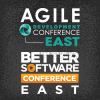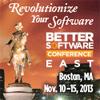 |
From Monoliths to Services: Paying Your Technical Debt
Slideshow
Ever since distributed software became popular, developers have been choosing whether to use monolithic architectures or service-oriented architectures. With the advancement of cloud infrastructure and the widespread implementation of agile methodologies, the latter approach has been...
|
David Litvak
|
 |
Architectural Patterns for an Efficient Delivery Pipeline
Slideshow
Continuous integration has made development faster and more reliable. However, as codebases expand, organizations are finding that their build pipelines slow down dramatically. One of the most common reasons is that we often rebuild parts of the system that don't need to be rebuilt.
|
Abraham Marin-Perez
|
 |
Modern Evolutionary Software Architectures
Slideshow
For many years, software architecture was described as the “parts that are hard to change later.” Modern advances in architecture have shown that if architects build evolvability into the architecture, change becomes easier. Neal Ford describes a family of software architectures that...
|
Neal Ford
|
 |
Evolve Your Software Architecture for Agile and DevOps: An Interview with Neal Ford
Podcast
In this interview, Neal Ford, a director and software architect at ThoughtWorks, explains why software architecture has traditionally been so difficult to change later on in the process and how you can adapt your modern architecture to be much more evolvable.
|
|
 |
The Case for #NoEstimates The #NoEstimates movement isn't really about no estimates. It’s about working in a sufficiently agile way that you don’t need estimates. When you break down your work into smaller chunks, you provide more value by delivering working product than you do by estimating. What would it take for you to work that way?
|
|
 |
Can We Do Agile? Barriers to Agile Adoption
Slideshow
“Can we do agile?” is a question often asked by individuals enviously looking at the impressive results reported by other organizations that adopted agile practices. What they are usually concerned about are the commonly perceived barriers to agile adoption: large scale, legacy...
|
Steve Adolph, Blue Agility
|
 |
Planning, Architecting, Implementing, and Measuring Automation
Slideshow
In automation, we often use several different tools that are not well integrated. These tools have been developed or acquired over time with little consideration of an overall plan or architecture, and without considering the need for integration. As a result, both efficiency and...
|
Mike Sowers, Software Quality Engineering
|
 |
Aligning Teams, Architecture, and Governance: An Interview with Dennis Stevens
Podcast
In this interview, Dennis Stevens of LeadingAgile talks about his upcoming presentation on the value of aligning teams, architecture, and governance, along with common pitfalls organizations face when it comes to syncing up their teams.
|
|
 |
Contextually-Driven System Architecture Reviews
Slideshow
When the World Trade Center collapsed, the telephone switching systems in the basement correctly diagnosed which lines were still working and continued to connect calls for several days using backup power. One factor contributing to this remarkable product reliability was the AT&T/Bell...
|
Michael Dedolph, Levi Deal Consulting
|
 |
Worse Is Better Revisited: An Interview with Kevlin Henney Kevlin Henney believes that it's time to revisit the thinking behind "Worse is Better," which he does in this interview with Noel Wurst. Kevlin explains that by getting past the catchiness of the phrase, and really digging deep into its real meaning, there's a real sense of agile underneath.
|
|

